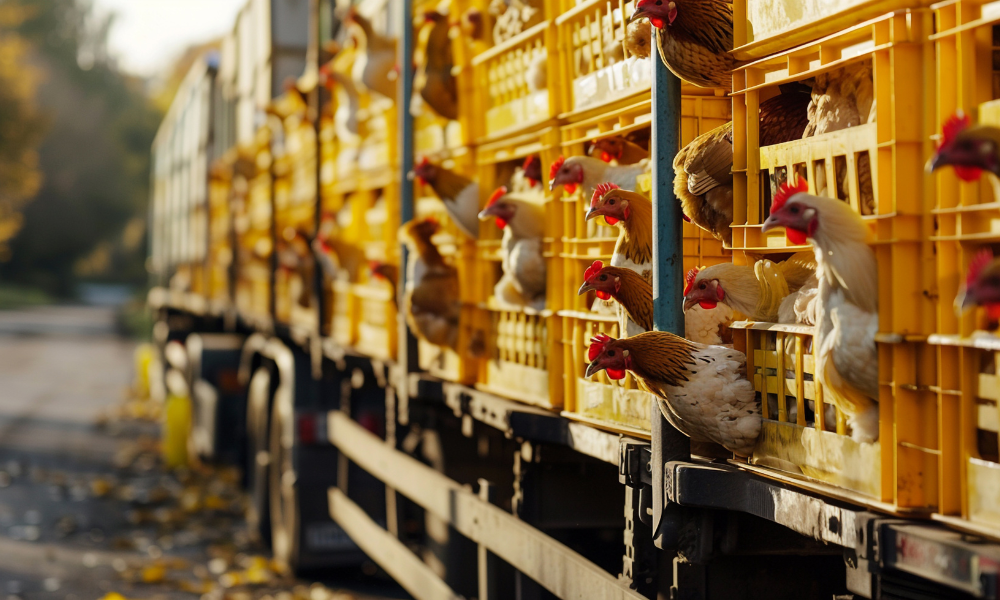
How can employers protect workers against avian flu?

The federal government has secured 500,000 doses of GSK’s Arepanrix H5N1 vaccine to protect workers at higher risk of exposure to avian influenza A(H5N1), according to the Public Health Agency of Canada (PHAC).
The vaccine will be distributed based on risk levels, with 60% allocated to provinces and territories and 40% kept in a federal stockpile. Provincial and territorial governments will determine how the vaccine is used based on local risk conditions.
“As we confront the ongoing global health risks posed by avian influenza, our priority remains protecting the health of people in Canada,” said Health Minister Mark Holland. “The proactive steps we are taking, including securing vaccine doses, reflect our commitment to being prepared for any potential public health threats.”
The National Advisory Committee on Immunization (NACI) has released preliminary guidance on the vaccine’s use in a non-pandemic context. While broad deployment is not recommended, the committee has identified high-risk populations who could benefit.
“NACI has developed a framework to help make vaccine decisions as the epidemiology of avian influenza A(H5N1) continues to evolve,” said NACI Chair Dr. Robyn Harrison.
“While it is not possible to predict exactly what will happen with this virus, the committee has identified some epidemiological scenarios and populations where human avian influenza A(H5N1) vaccine could be considered.”
The guidance will help provinces and territories determine when and how to use the vaccine if needed.
Canada reported its first human case of A(H5N1) in November 2024. Since early 2024, 68 human cases have been confirmed in the United States, primarily among poultry and dairy farm workers. One death has been reported in North America, according to the Canadian government.
Individuals with regular exposure to infected animals – including poultry and dairy farm workers, as well as laboratory personnel handling live avian influenza virus – are at greater risk of infection, according to PHAC. The agency, however, has stated that the overall risk to the public remains low.
“By making human vaccines against avian influenza available for potential use in individuals at increased risk of exposure to avian influenza as part of our readiness, we are enhancing our capacity to protect people in Canada and respond rapidly to emerging public health challenges,” said Chief Public Health Officer Dr. Theresa Tam.
Experts have been calling on the CDC to step up its efforts to prevent the virus from jumping to humans.
"We should be doing everything we can to eliminate the chances of dairy and poultry workers contracting this virus," said Angela Rasmussen, a virologist at the University of Saskatchewan in Canada, told the KFF Health News.
"If this virus is given enough opportunities to jump from cows or poultry into people, it will eventually get better at infecting them."
According to WorkSafeBC, if workers could be exposed to avian influenza, employers must develop and implement an exposure control plan (ECP).
“This plan must identify the workers at risk of exposure and the controls that are in place to protect those workers. These will be unique to each worksite and work environment,” said the government agency.
The agency also shared that some possible control measures are:
Engineering controls: Engineering controls involve making physical modifications to the workplace to manage the risk or reduce exposure. Some questions to consider:
Administrative controls: This type of control involves changing work practices and policies. Some questions to consider:
Personal protective equipment (PPE): This is the least preferred type of control. When used, there should always be at least one other control in place as well. Some questions to consider:
Previously, the Centers for Disease Control and Prevention (CDC) in the U.S. noted that some dairy farm workers have been using PPE.
“The lower mortality rate of cows infected with highly pathogenic avian influenza A(H5N1) viruses compared with that of birds can result in prolonged dairy farm worker exposures to ill cows through poorly understood transmission routes. Reported PPE use among workers at three dairy farms with A(H5N1) influenza outbreaks was high for some items, with the largest increase reported in frequency of use of eye protection once outbreaks were detected.”
It noted that dairy farms might isolate ill cows to reduce transmission, but the occurrence of asymptomatic A(H5N1) virus infections in cows means that workers can still be exposed during the milking process, “highlighting the need for and importance of PPE during milking for all cows on dairy farms with A(H5N1) virus infections detected”.
However, it called for the use of the appropriate PPE.